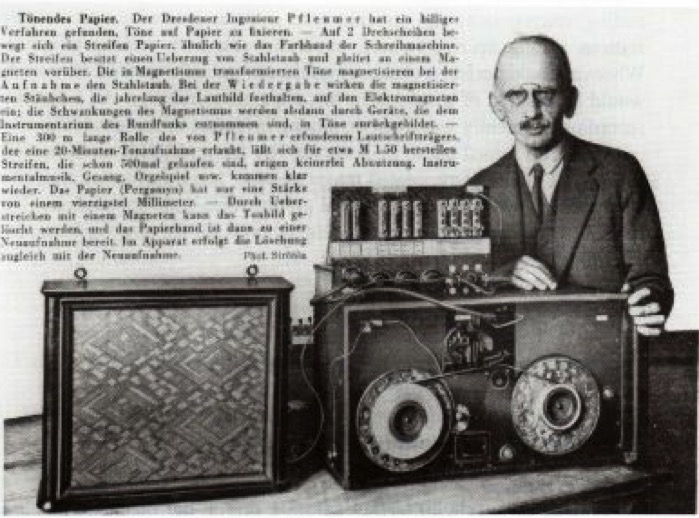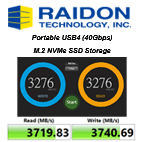History (1935): AEG Debuts Magnetophon Commercial Audio Tape Recorder With Low-Cost Magnetic Tape
Adapted to video and storage applications in the 1950s
This is a Press Release edited by StorageNewsletter.com on February 19, 2018 at 2:19 pmThis article comes from the Computer History Museum.
1935: Audio recorder uses low-cost magnetic tape
AEG debuts the Magnetophon commercial audio tape recorder in Berlin
Fritz Pfleumer with his magnetic tape machine (1931)

In 1926, American inventor Joseph A. O’Neill of New York, NY, patented “a strip of paper or other cheap material on which is deposited a trail or line of magnetic material, such as metal particles, dust or fine shavings” for reproducing sound.
He did not pursue it commercially.
Austro-German engineer Fritz Pfleumer (1881 – 1945) coated 16-mm wide paper strips with fine granules of iron powder as a medium for magnetic recording. He received a patent in 1928 for his “sound paper machine” that he licensed to AEG, Berlin.
AEG designed a recording machine and worked with BASF, Ludwigshafen to develop a cellulose acetate-based tape to replace the fragile paper. The Magnetophon K1 recorder and Type C tape debuted at the Berlin Radio Show in August 1935.
With superior sound quality and lower cost than competing steel-tape designs, the K4 model introduced in 1938 became AEG’s first commercially successful machine. In the late 1930s, polyvinyl chloride (PVC) emerged as the preferred base material for recording tape until replaced in the 1950s by ‘mylar’ (biaxially-oriented polyethylene terephthalate – BoPET) substrates from DuPont and others. Modern tapes have moved on to improved substrate materials such as PEN polyethylene naphthalate (similar to PET) and aramid (aromatic polyamide, a totally different Kevlar-like material).
John T. Mullin, a technician with Army Signal Corps, returned to the U.S. after WWII service in Germany with a Magnetophon K4 machine. He worked with singer Bing Crosby and engineer Harold Lindsay at Ampex Corporation, Redwood City, CA, to produce the Model 200 commercial recorder that was introduced in 1948. Other manufacturers, including 3M in the U.S., BASF in Germany, Philips in the Netherlands, and Sony in Japan, followed Ampex into the market for broadcast and consumer machines. Audio recording technology was adapted to video and storage applications in the 1950s.














 Subscribe to our free daily newsletter
Subscribe to our free daily newsletter


